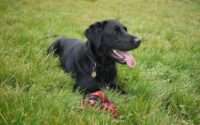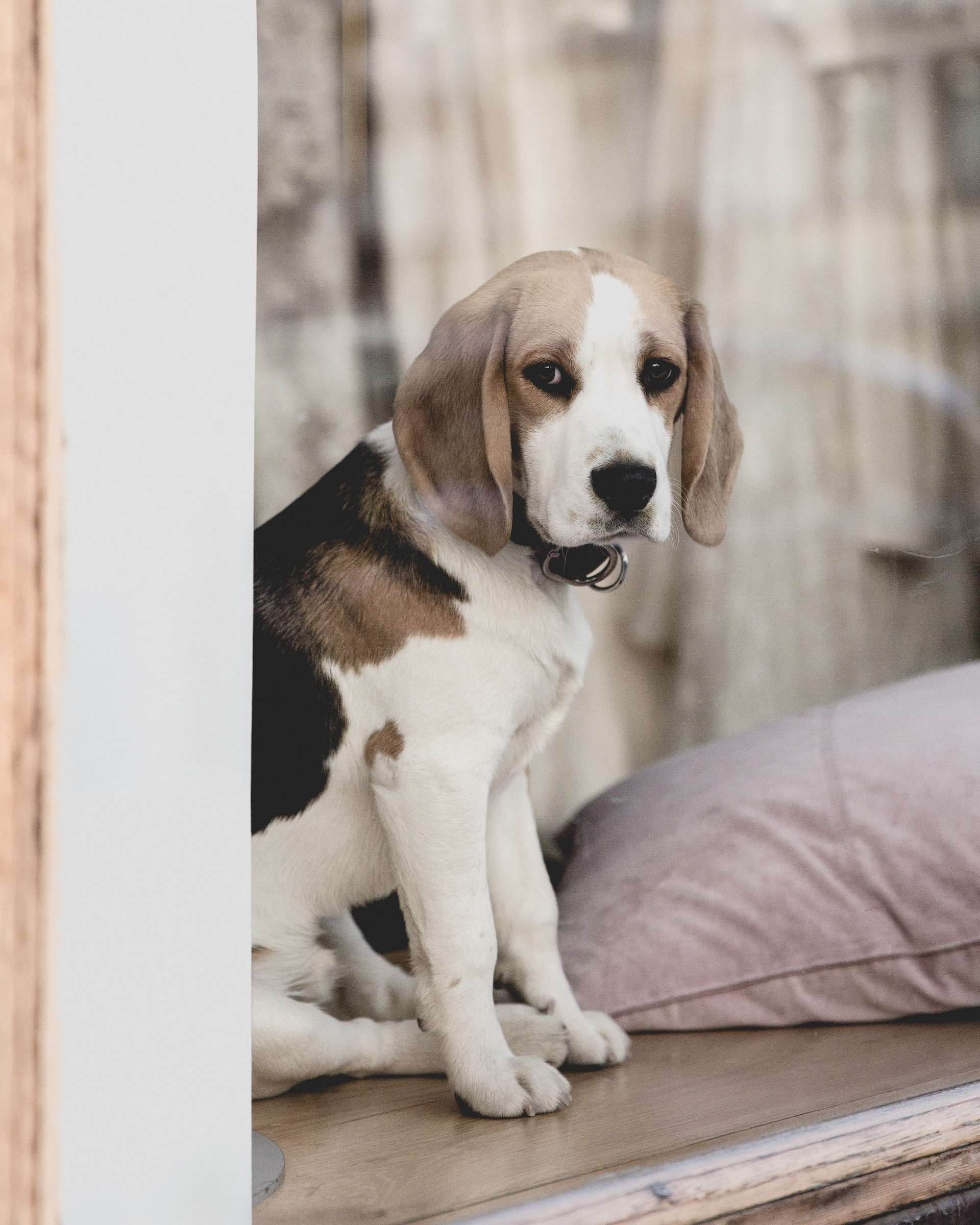Why Do Dogs Roll in Dead Animals? The Surprising Truth Revealed!
Picture this – you’re out for a leisurely stroll with your furry companion when suddenly, they dart off into the bushes, only to emerge moments later, proudly displaying a pungent aroma. You cringe, realizing they’ve rolled in something unsavory, perhaps a carcass or a pile of animal droppings. This perplexing behavior has puzzled dog owners worldwide for generations.
At BarkLikeMeow, we’re dedicated to unraveling the mysteries behind our beloved pets’ actions. Join us as we delve into the fascinating world of canine instincts to uncover why do dogs roll in dead animals, exploring their evolutionary roots and behavioral intricacies.
Evolutionary Background
Dogs possess an extraordinary sense of smell, far surpassing that of humans. Their olfactory prowess allows them to detect scents with remarkable precision, making scent-based communication a fundamental aspect of their social interactions.
Through centuries of evolution, dogs have inherited a myriad of behaviors from their wild ancestors. Among these instincts is the inclination to roll in odorous substances, a behavior deeply rooted in their survival strategies.
Scent plays a pivotal role in canine communication, serving as a means of conveying vital information to other dogs in their environment. From marking territory to signaling reproductive readiness, dogs rely heavily on olfactory cues to navigate their world.
In the wild, masking one’s scent can be a matter of life or death. Rolling in the scent of a deceased animal may serve as a camouflage tactic, allowing dogs to blend in with their surroundings and evade potential predators.
By exploring the evolutionary underpinnings of this behavior, we gain valuable insights into the complex interplay between instinct and adaptation in the canine world. Join us as we unravel the mysteries of why dogs roll in dead animals, shedding light on the fascinating mechanisms that govern their behavior.
Scent Communication in Dogs
Dogs possess an olfactory sense that is truly awe-inspiring. With up to 300 million scent receptors in their noses, compared to a mere 5-6 million in humans, dogs can detect odors with unparalleled precision.
Scent marking is a cornerstone of canine communication, allowing dogs to establish territory boundaries, convey social status, and even identify individuals. Through urine, feces, and glandular secretions, dogs leave behind a trail of olfactory messages for others to decipher.
Researchers have conducted numerous studies to unravel the intricacies of scent communication in dogs. From sniffing behavior to scent marking rituals, these studies shed light on the significance of olfactory cues in shaping canine interactions.
In the canine world, scent plays a pivotal role in establishing and maintaining social hierarchies within packs. Dominant individuals may employ scent marking as a means of asserting their authority, while subordinates may defer to these olfactory signals to avoid conflict.
Potential Explanations for Rolling in Dead Animals
Exploring the mysteries behind why dogs engage in the peculiar behavior of rolling in dead animals unveils a fascinating array of potential explanations:
- Masking Their Scent: Rolling in the scent of a deceased animal may serve as a form of olfactory camouflage, allowing dogs to disguise their own scent and avoid detection by predators or prey.
- Signaling to Others: By rolling in the scent of a dead animal, dogs may be broadcasting important information to their canine counterparts. Whether it’s a warning of potential danger or an invitation to join in a scavenging feast, the act of rolling serves as a form of olfactory communication.
- Bringing Information Back to the Pack: In the wild, scavenging for food is a collaborative effort among pack members. By rolling in the scent of a dead animal, dogs may be gathering valuable information to share with their packmates, signaling the presence of a potential food source.
- Psychological Theories: Beyond the realm of instinctual behavior, some experts suggest that rolling in dead animals may fulfill psychological needs for dogs. Whether it’s a form of sensory stimulation or a means of alleviating boredom, the act of rolling may serve as a source of pleasure or satisfaction for our canine companions.
While each of these explanations offers valuable insights into the behavior of rolling in dead animals, it’s likely that a combination of factors contributes to this complex behavior. By examining the phenomenon through a multidisciplinary lens, we can gain a deeper understanding of the underlying motivations driving our dogs’ actions.
Cultural and Environmental Influences
Understanding the cultural and environmental factors that influence a dog’s behavior sheds light on their interactions with dead animals:
- Breed Variations: Different dog breeds may exhibit varying degrees of propensity for rolling in dead animals, influenced by factors such as their historical roles and genetic predispositions. From scent hounds bred for tracking game to terriers bred for hunting rodents, breed-specific tendencies may shape rolling behavior.
- Domestication Effects: The process of domestication has undoubtedly influenced the behavior of dogs, including their interactions with dead animals. While wild canids rely on scavenging for survival, domestic dogs may exhibit a range of responses to encountering deceased animals, influenced by their upbringing and environment.
- Cultural Factors: Cultural attitudes toward dogs and their behavior vary widely around the world. In some cultures, dogs are revered as sacred animals, while in others, they are viewed as utilitarian companions. These cultural norms may impact how dogs are perceived and treated in relation to their interactions with dead animals.
- Human Influence: As our closest animal companions, dogs are deeply influenced by their interactions with humans. Our reactions to their behavior, as well as the environments we provide for them, can shape their responses to encountering dead animals. Understanding these influences is crucial for interpreting and managing canine behavior.
Common Misconceptions and Myths
Exploring the misconceptions and myths surrounding why do dogs roll in dead animals provides valuable clarity:
Myth 1: Dogs Roll in Dead Animals Due to Poor Hygiene – In reality, dogs have different olfactory preferences than humans and may find the scent of decomposing animals intriguing rather than repulsive.
Myth 2: Rolling in Dead Animals Is a Sign of Aggression – While dogs may engage in aggressive interactions with other animals, rolling in dead animals is more likely a form of scent communication or instinctual behavior.
Myth 3: Dogs Roll in Dead Animals to Mask Their Scent – While this behavior may have evolved as a survival strategy, it is not always a deliberate attempt to camouflage oneself but rather a complex behavior with multiple motivations.
Myth 4: All Dogs Roll in Dead Animals – While it may be more common in certain breeds or individuals with strong hunting instincts, rolling behavior can vary widely among dogs based on genetic, environmental, and individual factors.
Practical Implications for Dog Owners
By gaining insight into the reasons behind why dogs roll in dead animals, dog owners can better understand and manage this behavior. Recognizing that rolling is a natural instinct rooted in scent communication and survival strategies can help owners respond appropriately.
While it may not be possible to completely eliminate rolling behavior, there are steps dog owners can take to minimize its occurrence. Strategies such as providing ample mental and physical stimulation, redirecting attention away from dead animals, and reinforcing alternative behaviors can help deter rolling.
Proper training and socialization play key roles in shaping a dog’s behavior. By teaching dogs basic obedience commands and exposing them to various stimuli in a controlled environment, owners can help dogs learn to respond appropriately to different situations, including encounters with dead animals.
It’s important for dog owners to be mindful of potential health risks associated with rolling in dead animals. Decomposing carcasses may harbor bacteria, parasites, and other pathogens that could pose risks to canine health. Regular grooming and veterinary care can help mitigate these risks and ensure the well-being of furry companions.
Conclusion
As we conclude our exploration into why dogs roll in dead animals, we’re reminded of the complexity and richness of canine behavior. From evolutionary adaptations to individual quirks, dogs never cease to fascinate us with their unique personalities and instincts.
Through our journey, we’ve gained valuable insights into the multifaceted nature of rolling behavior, uncovering the evolutionary, social, and environmental factors that influence this intriguing habit. By approaching the topic with curiosity and open-mindedness, we’ve expanded our understanding of our canine companions and the world they inhabit.
Just as every dog is unique, so too are their behaviors and preferences. While rolling in dead animals may puzzle some, it serves as a reminder of the diverse ways in which dogs interact with their environment and communicate with one another.
As dog owners and enthusiasts, let’s continue to deepen our understanding of canine behavior, embracing the complexities and quirks that make dogs such beloved companions. By nurturing our bond with our furry friends and respecting their instincts, we can enrich our lives and theirs in meaningful ways.
Frequently Asked Questions
Why do dogs roll in dead animals?
Dogs roll in dead animals as a form of scent communication and instinctual behavior. It may serve various purposes, including masking their own scent, signaling to other dogs, and potentially bringing information back to their pack.
Is rolling in dead animals a common behavior among all dogs?
While rolling in dead animals is observed in many dogs, the frequency and intensity of this behavior can vary widely among individuals. Factors such as breed, upbringing, and environmental influences may play a role.
Is rolling in dead animals a sign of aggression or dominance?
Rolling in dead animals is not typically a display of aggression or dominance. Instead, it’s more likely a form of scent communication or instinctual behavior rooted in a dog’s evolutionary history.
Can rolling in dead animals pose health risks to dogs?
Yes, rolling in dead animals can expose dogs to potential health risks, including bacterial contamination and parasites. It’s important for dog owners to be mindful of these risks and take precautions to protect their pets.
How can I prevent my dog from rolling in dead animals?
While it may be challenging to completely eliminate rolling behavior, you can minimize its occurrence by providing ample mental and physical stimulation, redirecting attention away from dead animals, and reinforcing alternative behaviors through training.
Are there any breeds more prone to rolling in dead animals?
Certain breeds with strong hunting instincts or a high prey drive may be more prone to rolling in dead animals. However, rolling behavior can vary widely among individual dogs regardless of breed.
Does rolling in dead animals serve a specific purpose in the wild?
In the wild, rolling in dead animals may serve as a camouflage tactic to mask a dog’s scent and avoid detection by predators or prey. It may also help dogs gather information to share with their packmates about potential food sources.
Can rolling in dead animals be a learned behavior from other dogs?
Dogs are highly social animals and can learn behaviors from observing and interacting with other dogs. It’s possible that some dogs may pick up the habit of rolling in dead animals from their canine companions.
Is rolling in dead animals related to a dog’s hygiene or cleanliness?
Contrary to popular belief, rolling in dead animals is not a sign of poor hygiene or cleanliness. Dogs have different olfactory preferences than humans and may find the scent of decomposing animals intriguing rather than repulsive.
Should I be concerned if my dog frequently rolls in dead animals?
While occasional rolling behavior is normal for many dogs, frequent or obsessive rolling may warrant further investigation. If you’re concerned about your dog’s behavior, consult with a veterinarian or animal behaviorist for guidance.





Everyone loves what you guys tend to be up too.
This sort of clever work and reporting! Keep up the superb works guys I’ve incorporated you guys to our blogroll.